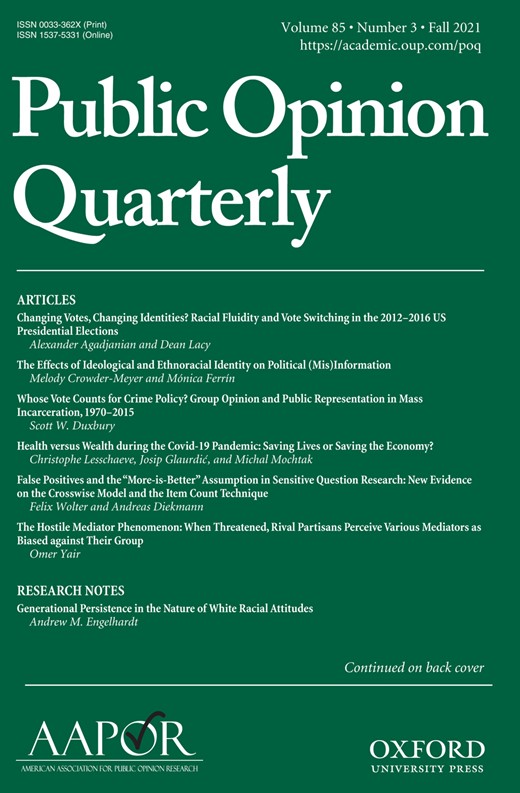-
Views
-
Cite
Cite
Omer Yair, The Hostile Mediator Phenomenon: When Threatened, Rival Partisans Perceive Various Mediators as Biased against Their Group, Public Opinion Quarterly, Volume 85, Issue 3, Fall 2021, Pages 864–886, https://doi.org/10.1093/poq/nfab035
Close - Share Icon Share
Abstract
Rival partisans tend to perceive ostensibly balanced news coverage as biased against their respective sides; this is known as the “hostile media phenomenon” (HMP). Yet complaints of hostile bias are common in contexts besides the media (e.g., law enforcement and academia). Does a process similar to the HMP occur outside the context of news coverage? And do perceptions of political bias in different contexts share certain similarities? This paper proposes that the HMP is a specific case of a more general hostile mediator phenomenon, where rival partisans perceive various public institutions and organizations that are expected to be neutral as biased against their respective sides. The paper starts by presenting a theoretical framework according to which partisans’ bias perceptions are affected by the threat to the power and status of their ingroup posed by a mediator’s actions. Evidence from three studies (total N = 4,164) shows that members of rival ideological camps in Israel perceived the Israeli attorney general and the Israeli police to be biased against their respective camps. An additional study (N = 2,172) shows that both Democrats and Republicans perceived the social network Facebook to be biased against their side. Moreover, an embedded, pre-registered survey experiment buttresses the causal claim that ingroup-threatening information increases perceptions of hostile bias. The implications of these findings for our understanding of people’s bias perceptions, as well as for citizens’ trust in public institutions and democratic stability more generally, are discussed.





